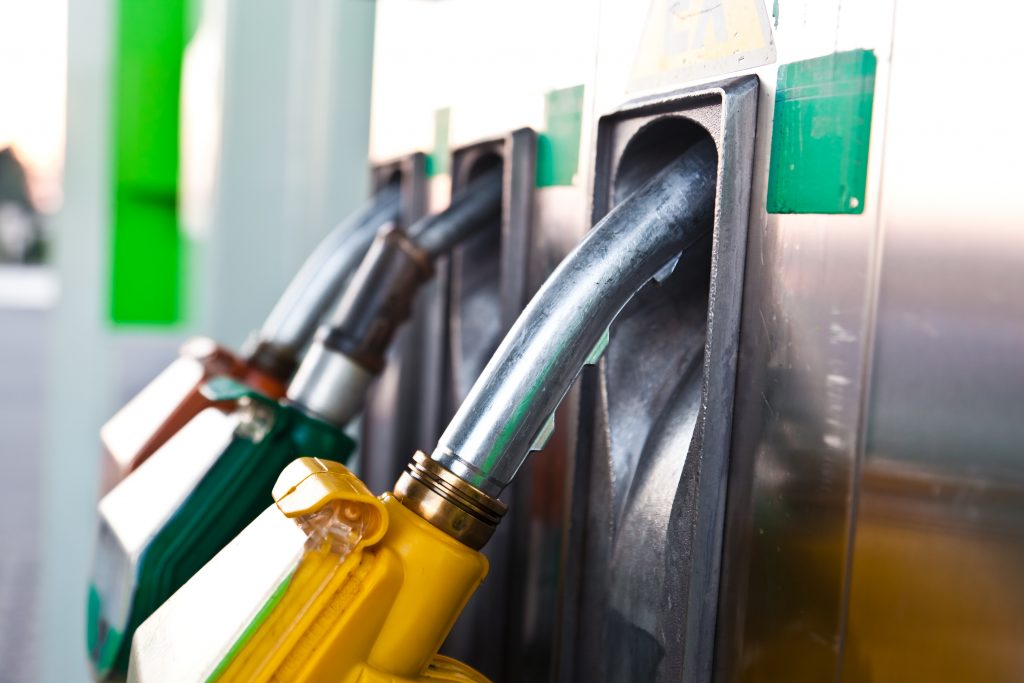
Petrol and diesel prices are continuously rising and hitting lifetime highs each day; but there is no respite in the offing. The government, too, is denying any excise duty cut. BJP national spokesperson Nalin Kahali has no compunction in saying that fuel price rise is good news for states and the Centre as they will earn higher revenues.
India is the world’s third-largest oil importer. The government has blamed external factors such as sharp rise in international crude prices and a dramatic fall in the exchange rate of the rupee against the US dollar for the fuel price rise. The hypocrisy of the BJP is out in the open as they had called for a nationwide bandh when oil prices had risen during the UPA regime, but when it is at the helm of affairs, it is attributing the price rise to external factors.
This is a blatant lie. It is true that crude prices have been rising globally amid proposed renewal of US sanctions on oil export from Iran and the depreciation of rupee against the dollar. But, this is not the whole story; the real villain is India’s steep taxes on petrol and diesel. Also the 20 per cent of crude oil needs generated within India is not not considered while fixing fuel prices.
Normally crude oil price per litre is fixed after adding ocean freight to the price of imports. Then the basic cost of fuel is arrived by further adding entry tax (custom duty, import charges), refinery processing, Oil Marketing Company (OMC) margin and freight cost. Finally retail fuel prices are derived by further adding excise duty, road cess of central government, commission of petrol pump dealers, and VAT by state. Retail fuel prices vary from state to state owing to different VAT rates imposed by states above central taxes.
In May 2014, when the BJP rode to power on the promise of “acchhe din”, price of crude oil per barrel in the international market was $ 106.85. The exchange rate was Rs 58.53 to a dollar and crude prices per litre came to Rs 39.23. Petrol was being retailed at Rs 72.26 per litre and diesel at Rs 55.48 a litre. On September 15, 2018, Petrol was priced Rs 90 per litre in Mumbai, close to Rs 82 per litre in Delhi and Rs 80.47 in Bhubaneswar, while diesel followed a similar trend. India purchased crude oil (Brent) per barrel at $78.09 ($79.59 adding ocean freight) which is far below the May 2014 level. Even if the rupee depreciated to Rs 72.10 to a dollar, the price of crude oil per litre amounts to Rs 35.41 (Rs 36.10 after adding ocean freight). But retail fuel price is much higher today than what it was in May 2014. This means oil prices have risen on high tax component.
The argument that high global oil prices are inflating domestic prices is baseless as neighboring countries, and even the US, have lower oil prices. There is also a call to bring fuels under the GST to bring fuel prices down. But fuel prices can be reduced without bringing them under GST
The truth behind the price rise is that no one wants to give up the goose that lays golden eggs. The petroleum sector is a big source of revenue for both the central and state governments. Between November 2014 and July 2017, when international crude prices were benign, the centre chose to not pass on any benefit of international crude prices to the consumer. Instead, to shore up finances, it raised excise from Rs 3.46 per litre on diesel to Rs 15.33 and from Rs 9.20 per litre in petrol to Rs 21.48 in nine installments. But then cut the tax just once last October by Rs 2 a litre. This exercise led to the doubling of excise collections from petroleum products over the last four years – from Rs 99,184 crore in 2014-15 to Rs 2,29,019 crore in 2017-18.
Many states also increased VAT and states saw their VAT revenue from petroleum products rise from Rs 1,37,157 crore in 2014-15 to Rs 1,84,091 crore in 2017-18. In addition to excise taxes and VAT, corporate taxes, royalty and dividends paid to central government from public sector oil companies, the Centre and states earned Rs 5.53 lakh crore in 2017-18 from Rs 3,32,620 crore in 2014-15. It was Rs 5,24,304 in 2016-17 up from Rs 4,18,652 crore in 2015-16. It means government’s revenue from the fuel industry went up an astonishing 66 per cent in four years.
Now more than Rs 573 crore per day was collected by the states and Rs 942 crore per day by the Centre. Between 2014-15 and 2017-18, the centre and states amassed Rs 18,23,760 crore, of which states gathered Rs 7.19 lakh crore and the Centre Rs 11.04 lakh crore. But the Centre is not prepared to reduce tax. This is nothing but loot of people’s money resulting from opaqueness of petroleum pricing.
The argument that high global oil prices are inflating domestic prices is baseless as neighboring countries, and even the US, have lower oil prices. There is also a call to bring fuels under the GST to bring fuel prices down. But fuel prices can be reduced without bringing them under GST.
It is being alleged that while the government is levying high taxes on petroleum products, making them dearer for domestic consumers, the same are exported for far less. A news report based on an RTI reply on exports claims that India is exporting refined petrol to 15 nations at Rs 34 per litre and refined diesel to 29 countries at Rs 37 per litre. What is surprising is that dealers’ margin has been increased in the local context.
Taxing items of mass consumption directly linked to livelihood of masses at high rates is unwarranted and regeressive. Instead of cutting central taxes, the Centre should not force states to reduce theirs. The Centre should reduce taxes on diesel as it has alternatives sources of revenue. It should generate revenue by taxing the rich and by curbing tax evasion. The Centre cannot be strong without states being financially sound.
The writer is an Odisha-based columnist and economist. e-Mail;skmohapatra67@gmail.com
